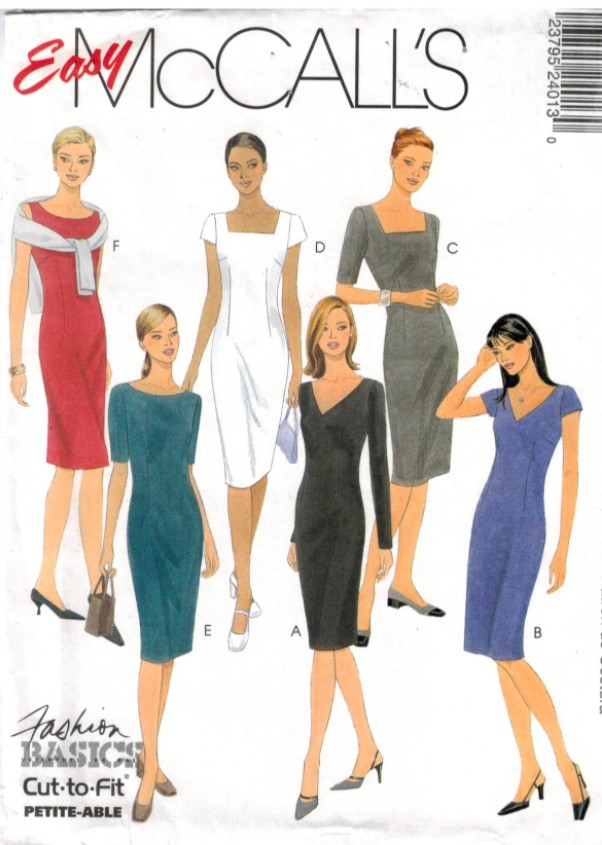I don’t know about you, but I miss seeing Midge Maisel in all her 1960s fashion glory in The Marvellous Mrs. Maisel. I enjoyed this series, not least because of the extraordinary costumes. I’m only slightly obsessed with the 1960s (*bats eyes*), and this show gives us the 1960s in spades.


When I was writing my book Kat’s Kosmic Blues (the sequel-prequel to The Year I Made 12 Dresses), I immersed myself in the 1960s, and one of the most fabulous books I now own is Madly Marvellous, all about the costumes in, you guessed it, The Marvellous Mrs. Maisel.

I’m so obsessed that one of the characters in my new book, which is just about to be published (more about that in an upcoming post), is a character from 1960. All of this reminded me of a presentation I gave for an online sewing summit a couple of years ago. It was on the topic of using vintage patterns. But most people who talk about vintage patterns mainly focus on earlier ones—the 1940s and 1950s. I have no interest in reproducing earlier looks because they are too costumey to be useful in my life. But the 1960s? I can tweak those!
Have a look at an inspiration board I created a few years ago for a cruise collection I designed for myself. Several patterns from the 1960s were as much of an inspiration as anything else. Then more recently, 1970s patterns have inspired me as I planned sewing projects for seasonal wardrobes.

And although we love them, there are differences between the patterns of today and those of yesteryear.
First, there are style details that tell of an era. These are giveaways like the mod shift dress line of the late 1960s or the massive shoulders of the 1980s. And some of these shapes were related to the fact that undergarments were different then.
For example, this vintage bra dictated the bodice shape of its era.

And this wasp-waisted pattern from the 1950s required a girdle.

Second, the sizing was different and evolved through the ages. These days, new sewists are generally mortified to learn that if they wear a size eight in ready-to-wear, they’ll wear a size 14 in a sewing pattern.
The truth is that sewing pattern sizing itself changed four times before 1972, and many of the patterns you’ll find these days fall into what I call “vintage fit”—note that the waistline measurements were much smaller proportionately.
Today’s bodies don’t generally fit into vintage patterns without some modification.
You also might be interested to know that between 1967 and 1972, the bust point apex was lowered on sewing patterns by 5/8 (1.5 cm) because softer bra styles demanded it. At the same time, they added 1 inch to the waistline. Remember that before those years, women usually wore girdles. So, changes in undergarments also resulted in sizing changes.
Here’s how a size 16 sewing pattern changed:

Another note about sizing: Before the 1970s, vintage pattern envelopes contained only one size rather than the multiple sizes we see today.
Next are the fabric recommendations. A dress pattern that you might think ought to be made in a knit will often have recommendations for only woven fabrics. This is where you need to be careful.
This, of course, means that the pattern is created with more design ease. I’ll give you a few more hints about this when I show you my project in the next section. Also, on fabric selection: Fabric widths have gotten bigger.
Finally, there are differences in techniques for sewing these patterns. Seam allowances (varied from one patternmaker to another, but by the 1960s, they were more standardized- 5/8 in or 1.5 cm)
Use of facings: for example, necklines were almost always faced. Today, you might have been sewing for years and never have used a facing.
- Hems were generally created to be deeper and hand-sewn.
- Interfacing was stitched in before the days of iron-on.
- Centred zippers were the norm. Sometimes, we used lapped zippers. Now, you could put in an invisible one.
What this means is I always make a muslin for best results—a step I highly recommend.


Here are some examples of vintage patterns I’m using now. Let me tell you why I chose these ones.



McCall’s 5337 – 1960 (Size 16 ― Bust 36)
I’m in love with boleros, and today’s bolero patterns are often too detailed.
Simplicity 7264 – 1967 (Size 16 ― Bust 36)
I love the idea of a dress and matching jacket. It doesn’t fit that well into my current lifestyle, but if I choose the fabric carefully, I think I could make it work. But it does have one design problem― a flared skirt that screams 1960s. I will have to narrow the flare on this one.
I’ve made three LFJ’s, and this pattern looks like it might work for them.
McCall’s 2226 ― 1969 (Size 14 ― Bust 36)
This pattern reminds me of styles I loved as a teenager. But there’s something else. It has a funnel neckline that I think transcends the decades. Again, though, it has an A-line skirt that screams 1969, and really, unless you long for a Woodstock summer, who wants 1969 again? I’ll take a wedge out of the skirt and lengthen it from just below the waist.
McCall’s 2401―1999 (Size 14-16-18)

This one has a lot going for it for me.
- It has a timeless style― and one I am especially drawn to.
- It offers neckline variations
- It offers sleeve variations
…thus providing endless opportunities.
Of course, I do love the style of the 1920s and all those fabulous flapper dresses. But my current lifestyle doesn’t lend itself to them. Now, my writing is a different thing completely. You may remember Frannie Phillips?



You must be logged in to post a comment.